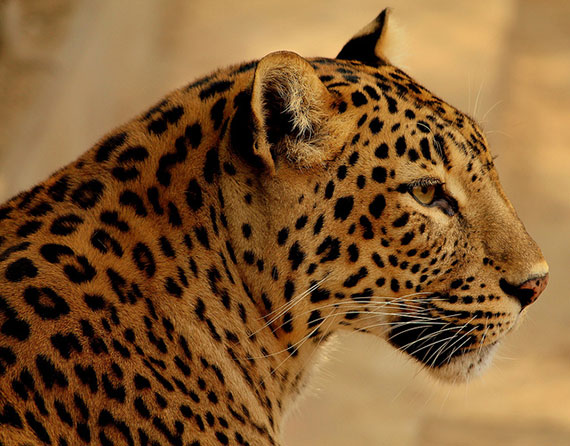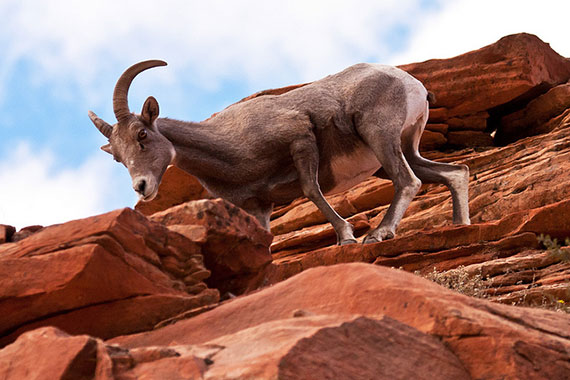We have seen a few different slogans relating to the five “P’s” for improving photography in general such as ‘Proper Planning Prevents Poor Performance’ or ‘Proper Planning Produces Perfect Photos’ but nothing detailed or specific to wildlife photography.

Photo by Ali Arsh; ISO 400, f/5.6, 1/100-second exposure.
We therefore compiled the following list of five “P’s” that if followed, will assist you in capturing better wildlife photographs.
Passion – This is the critical element because if you are passionate about photography, animals and being in wilderness areas the other four elements will come naturally. Photography is also about sharing your passions with the world through your photographs, and wildlife photography provides you the opportunity to capture pictures that say “Wow,” and pass that on to other people.
Patience – In order to see animals such as Africa’s big-five, super-seven or elusive-eleven you must be prepared to drive slowly and to sit for long periods of time at waterholes and hides. You must also be prepared to be patient under harsh conditions. For example, we photographed a cheetah chasing and killing a springbok in the Kgalagadi Transfrontier Park, which took four hours in the midday heat of summer! We also sit at waterholes in Etosha until after midnight in order to get photographs of unusual animals. That takes patience but we are rewarded with superb photographs!
Practice – the saying practice makes perfect is so true. You cannot expect to come on an African safari not having used your camera and lenses regularly in the previous months. We live close to the Kruger Park and Pilanesberg Game Reserve so we are able to go on safaris regularly. There are, however, many other opportunities for you to keep in practice even if you do not live close to a national park. You can photograph your pets, insects and birds in the garden, landscapes, sunsets, the moon and lightning. And just because you are a wildlife photographer doesn’t mean you shouldn’t photograph other subjects such as people, motor cars and airplanes in order to keep in practice!
Preparation – You need to know how your camera works and how to use it. This means reading your camera manual and then reading photo books, online photo tutorials, site guides/park guides, books on animal behavior, e-books and reading or listening to interviews done by professional wildlife photographers.
Purpose – When we first started going on self-drive photo safaris we had no purpose. We would leave camp in the morning and drive around all day looking for subjects. Our motto was ‘if it moves we will photograph it!” This is termed ‘subject-driven photography’ – we see a subject and we photograph it regardless of the lighting conditions or where the subject is or what it is doing. Subject-driven photography is not wrong – it is just not appropriate for wildlife photography. It works with studio photography and even with macro photography where you control the lighting and subject placement.

Photo by James Marvin Phelps; ISO 800, f/5.0, 1/1250-second exposure.
In wildlife photography you must have a purpose and that is termed ‘situation-driven’ photography. Our purpose has now moved from subject-driven to situation or light-driven photography. We look for subjects in good light as our purpose is to get good photographs of any animal. We have often driven past lion sightings and the people who have stopped look at us in amazement! We do not want bad photographs of lions but want to rather find other subjects in good lighting, thereby providing us with WOW photographs.
These 5 “P’s” have been our formula for improving our wildlife photographs and they can be yours as well. If you have the passion the other four P’s should automatically be achievable by you.
About the Author:
Mario Fazekas (kruger-2-kalahari.com) is a wildlife photographer living in South Africa.
Like This Article?
Don't Miss The Next One!
Join over 100,000 photographers of all experience levels who receive our free photography tips and articles to stay current:






I agree and thank you for listing thees great points PLUS stressing the importance of HOW people should learn how to correctly use their equipment in order to get those great images. I haven’t been on any safari yet (soon) but the few places in the countryside I’ve been to to capture wildlife, I was disgusted to find the filthy signs of previous humans trekking through the area. I am disgusted that others would litter a great area, hiking trail, a pond, etc with their trash! PLEASE: take it in, pack it out. Leave NO trace you were here!
Great article! Along the lines with Uwe’s, thoughts, I’ll add “PROTECTION” for: the wildlife, their environment, our gear and yes – ourselves! And along with Mario’s “5 P’s” I’d add “PRIORITIZATION.” While we’d always love to be prepared and practice every situation, at times we only have a moment to get that extraordinary shot. At times like this, we will miss the shot if we’re fiddling around with camera settings, lens and filters, mounting on a tripod or even basic elements as Rule of Third composition, etc. For instance, while you might be preparing to take a photo of an animal, all of a sudden an incredible bird shot may reveal itself to you and you won’t have time to go to high speed shutter, matrix sensor points, longer lens, etc. Just start “spraying and praying” hoping you’ll get a lucky focus that you can zoom in back in post-production.
This introduces a plesailngy rational point of view.
I’m not a wildlife photographer (I wish I was) but I’ll be sure to keep these tips in mind; especially the practice one, since I am WAY behind on practicing my photography.
Don’t forget “P” for “Price” – what it costs to own the lenses for this type of photography :)
Point one:
Respect for the animals and natures should be at the top of the list in every wildlife photographer’s.
Rather than destroy what we love we should all work hard to helf it survive and generate public interest in our work.